A while back in april 2010 I posted about staking axes for the roads in a new subdivision in Heestert.
Survey work in Belgium #12
Last month I returned to the site to check the as-built we received from the contractor.
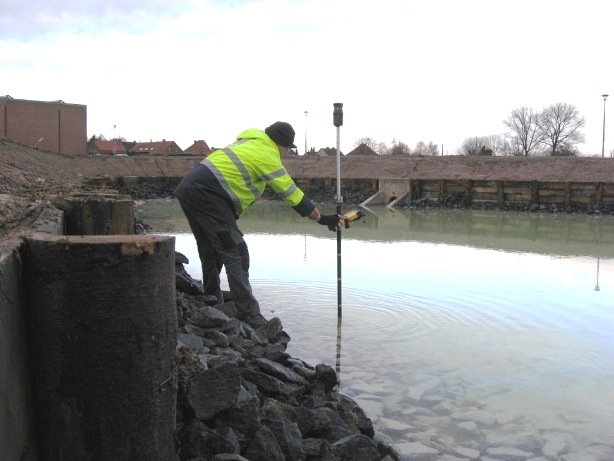
A view at the storm water detention pond.
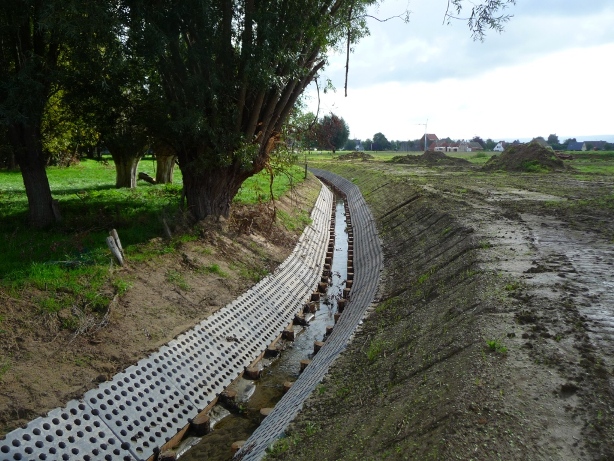
part of the ditch has now bank reinforcement.
11 lots (from 34) are sold already, so yesterday I returned for some staking.
It's solo work, my colleague Jan drives our full equipped survey van, so I installed my car with a the minimalistic survey tools.

For the cornerstones we use French Feno-poles, they have a concrete top and a spike with anchor prongs.
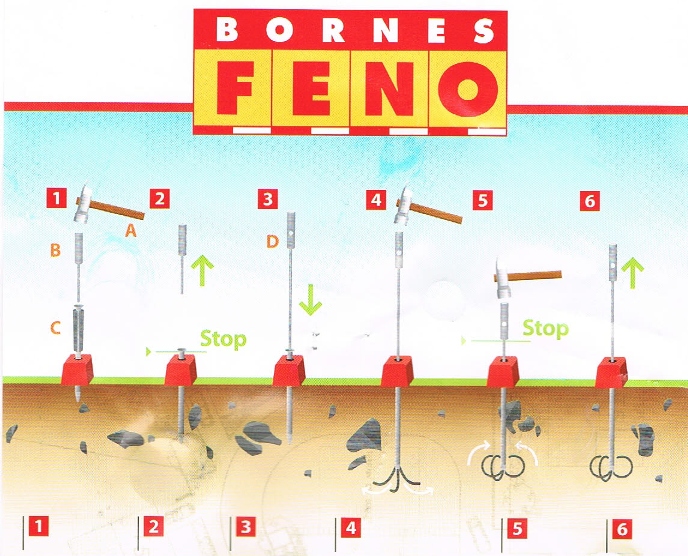
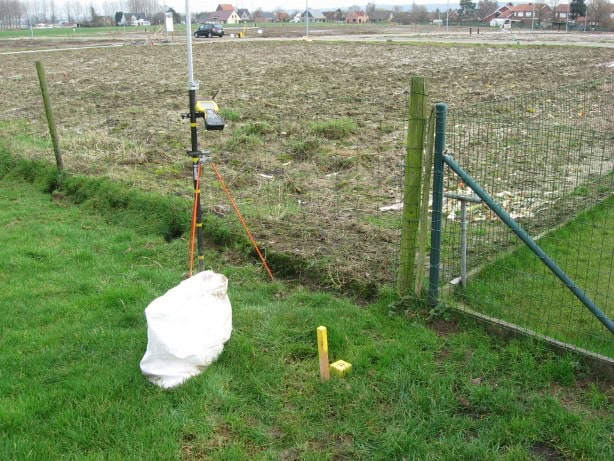
Had to be a little inventive for the last cornerstone, the utility pole was slightly in the line of sight ...
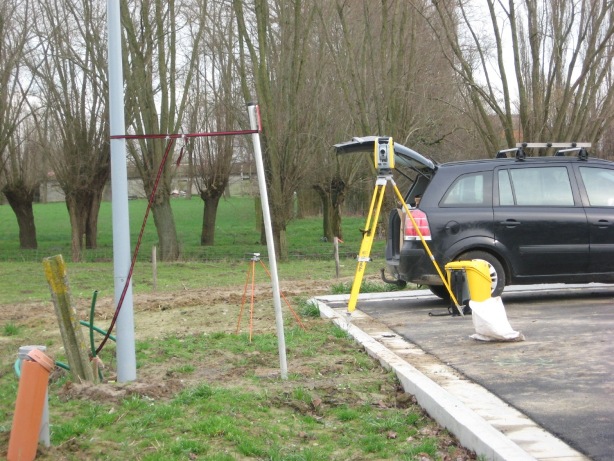
We place an additional survey spike in the gutter in the extended lot line.
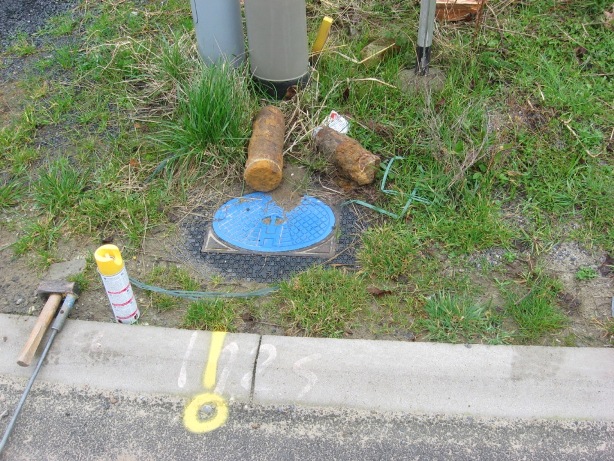
Some remainders of the Great Wars,
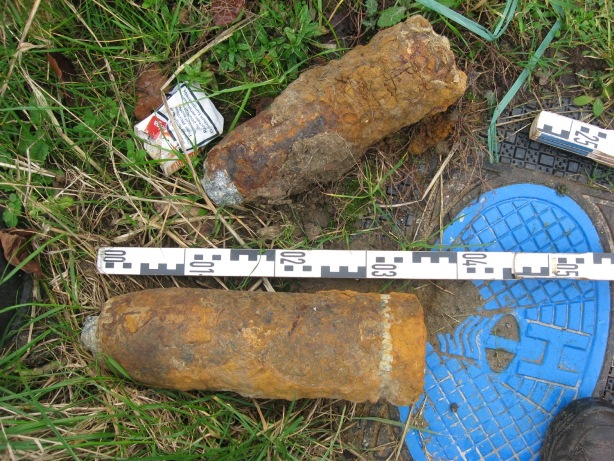
These are today's pictures from another subdivision at Passendale near Ypres, well known for the "Battle of Passchendaele" one of the major battles of WWI here in Flanders where the British, French, Belgians, Australians, Canadians, Indians, New Zealanders and South Africans fought side by side.
Battle of Passchendaele on wikipedia
Christof.
In Flanders Fields
By: Lieutenant Colonel John McCrae, MD (1872-1918)
Canadian Army
In Flanders Fields the poppies blow
Between the crosses row on row,
That mark our place; and in the sky
The larks, still bravely singing, fly
Scarce heard amid the guns below.
We are the Dead. Short days ago
We lived, felt dawn, saw sunset glow,
Loved and were loved, and now we lie
In Flanders fields.
Take up our quarrel with the foe:
To you from failing hands we throw
The torch; be yours to hold it high.
If ye break faith with us who die
We shall not sleep, though poppies grow
In Flanders fields.
Are any of those still considered "live" and could explode? Do you call the Bomb Techs when one is uncovered? How do you dispose of this stuff?
I like the markers! We looked at using them but they were "too expensive".
Why spend money on a nice marker for your property when you can shove something cheap in the ground and "save money". What does one go for there (I think they cost about 25 euros here).
We try to always watch out for underground utilities when we're putting in a monument...but bombs.
Cliff,
the Belgian DOD has a special branch (DOVO) for this task located near Ypres, they still collect and dismantle 250 tons of munitions per year from witch 10% are toxic. A lot are found by farmers and on construction sites, most still have the explosives but have no more detonator. Accidents still happen, some people do collect them, start cleaning them and try to open, we hear this every year again ...
When DOVO comes they check & remove the detonator if possible and then transport the bombs to a save zone for detonation, when the bombs are unstable the region is evacuated for detonation on site.
jlwahl,
there are some nice recites one Youtube
In Flanders Fields
chr.
MightyMoe,
the Feno-poles are very common here, we have a tradition over here with the corner stones. Before these type we had the real concrete poles 10x10x40 cm. they weight a lot and it took us half a day to stake 1 lot. Rebars are very rarely used here.
chr.
Nice post Christof,
Thanks and have a great week!
Rebars are very rarely used here.
That will only result in stable property lines. You'll be in danger of putting yourselves out of work.
I noticed the one is somewhat off the fence corner. Is that fairly normal?
That's the border of the new subdivision, (the fence with the iron poles) remains (on 1 and 4 o clock seen from the intersection, the other fence (wooden poles) at 10 o clock is in the subdivision and is no longer useful. The old parcels were bought by a land developer, roads are constructed and the interior lots are now a lot smaller.
chr.
Wow! Very interesting. This picture from your Wiki link tells the story.
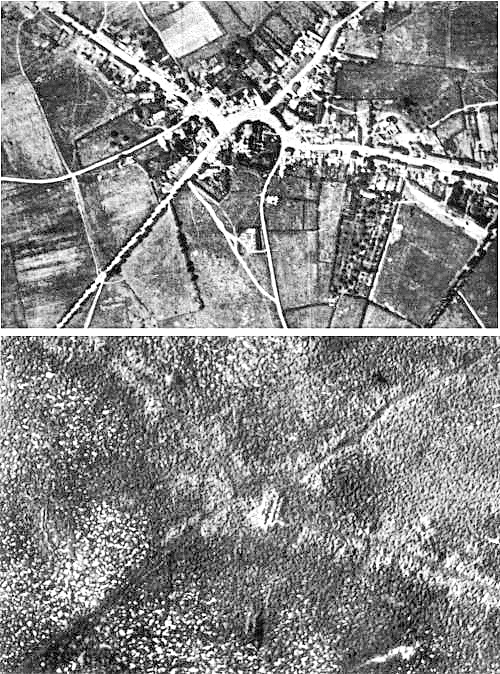
Christ-
Thank you for your information about how you do subdivision work.
The monuments were very interesting.
The poem was by a Guelph, Ontario born doctor.
http://www.veterans.gc.ca/eng/sub.cfm?source=history/firstwar/mccrae
http://en.wikipedia.org/wiki/John_McCrae
Guelph is about 15 mile south of where we live in relative peace because of people like Dr. McCrae.
Cheers
Derek
Survey work in Belgium #23 (pics) Christof. How do U
remove one of those Fenos if you decide to move a boundary ( note I did not say put it in the wrong position... LOL)
Thanks for sharing.
RADU
Survey work in Belgium #23 (pics) Christof. How do U
Richard,
the perfect tool is the shovel, and hope there is not to much detritus and trash.
You simply dig it out by making a hole 40x40x60 cm.
chr.
Survey work in Belgium #23 (pics) Christof. How do U
Chris as these are new boundaries do you place the mark 'nearly there' then when hammered home adopt the actual final position as the new boundary?
I would imagine trying to get one of those in its true(designed/intended) position would be rather painful in some ground. They do look very decent marks and I like the idea.
Also how does one fence boundaries? Here most pull the peg and insert the corner fence post directly centred over the peg.
That would obvioulsy waste a very nice monument.
We use 75mm² X 400mm wood pegs flush with ground with tack in top here (Tasmania) for most subdivisions, but can use anything so long as its described. Within reason.
Iron bars must be at least 400-450mm long, also star bars same length. But latter mostly rural surveys where durability is far more important.
We don't have to fence a boundary under any law here but most do, so few original urban pegs remain for long. We reference well and all cadastral boundaries are fully adjusted for zero misclose- well thats the theory.
they're a lot cheaper here, you get them for 12.62$ tax in.
chr.
Survey work in Belgium #23 (pics) Christof. How do U
Richard,
for new subdivisions in loose soil it's realy easy to set them at the exact point, when driving the pin verically. Before tightning you check and can adjust. Most are set within 2 cm.
When there's a lot of brick and trash we use a rebar to make a hole first, and place the pole then. Sometimes it's impossible to set it at the designed point, we then place it at an offset, we'll note this on the pole and on the plan of course.
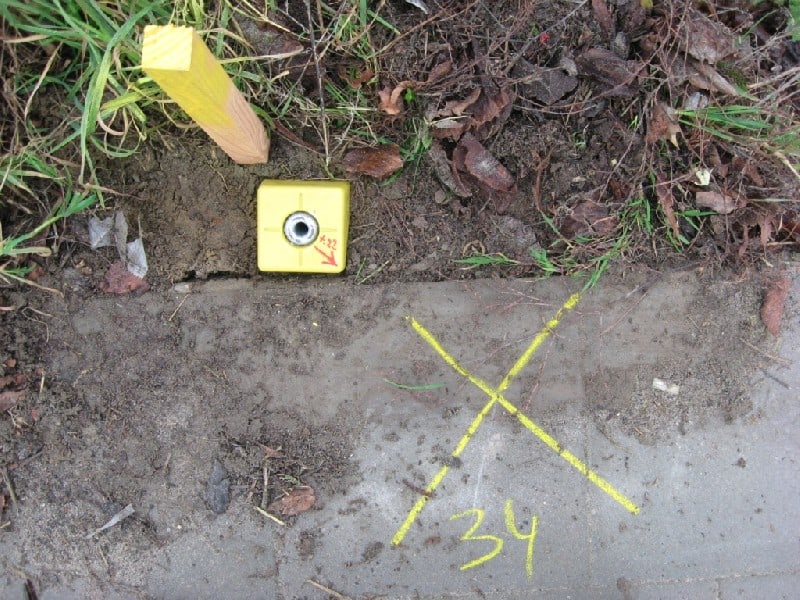
We do have the same problem with fencing, some contractors/owners remove the poles, some place their fence a little backwards, and some will even reset the poles back.
chr.



